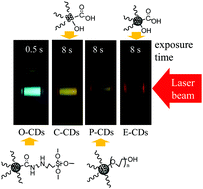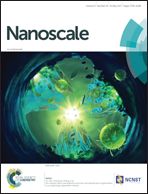Realization of multiphoton lasing from carbon nanodot microcavities†
Abstract
The use of organosilane chains to link carbon nanodots (CDs) through organosilane surface functional groups is proposed to improve the efficiency of multiphoton absorption. As a result, a large absorption coefficient of 1.16 × 10−6 cm5 per GW3 is obtained and four-photon luminescence under 1900 nm excitation is observed from the CDs at room temperature. Furthermore, a CD laser, which demonstrates random lasing under three-photon (i.e. 1400 nm) excitation, can be realized by sandwiching a CD film between a quartz substrate and a dielectric mirror. The formation of strongly confined microcavities, which arise from the non-uniform distribution of refractive indices inside the CD film, is attributed to the realization of lasing emission.



 Please wait while we load your content...
Please wait while we load your content...